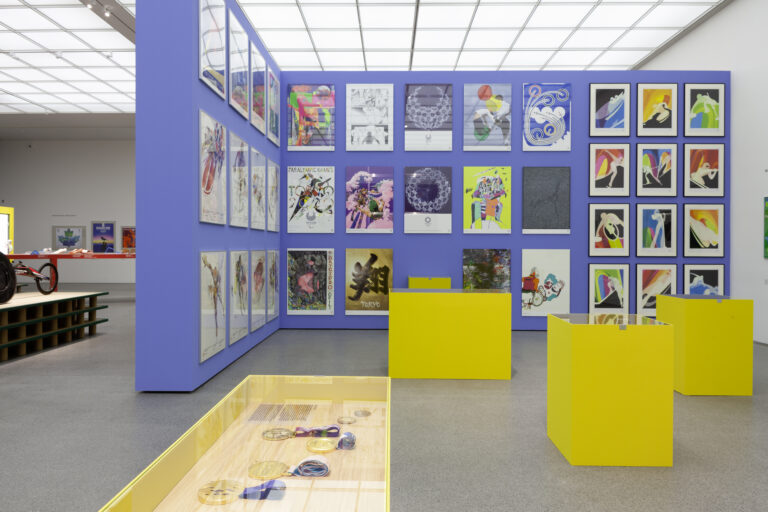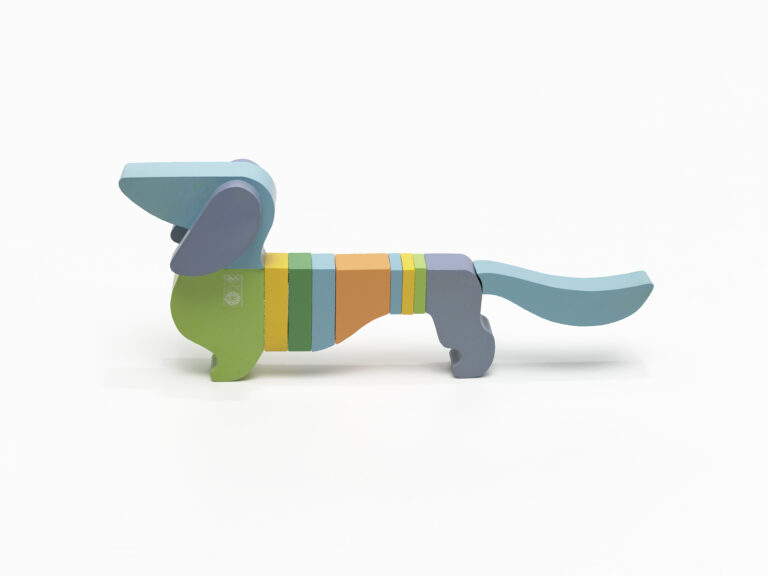To mark the 50th anniversary of the 1972 Olympic Games in Munich, Die Neue Sammlung – The Design Museum is focusing on developments in design for the Olympic Games and the Paralympics Games. As the largest sporting event in the world, the Games have always been the motor for and focus for innovations. Not only do international athletes compete with one another. The manufacturers of sports equipment also try to outdo one another when it comes to equipping the athletes, just as do the host countries when it comes to the visual and architectural design of the games. Despite the original idea of the Olympic Games as an ambassador for peaceful, non-political understanding among people and nations, they do in fact often become vehicles for political and social statements.


The exhibition “Designing for the Olympics” aims to illustrate the many ways in which design and the Olympics are intertwined.
The 1972 Olympic Games in Munich with their forward-looking visual identity by Otl Aicher form the starting point for reflections on the Games that preceded and followed them. The presentation shows how inventiveness and a spirit of innovation are reflected in the design for the Olympic and Paralympic Games, and which values and goals are expressed in the design for the Olympics.
The notion of progress plays just as big a role here as the political agenda, sustainability and inclusion. With this focus on the design of the Olympic Games and its historical development, Die Neue Sammlung sets an accent that is both important and unique when examining the Olympics from a political and social perspective in the anniversary year 2022.
Consequently, the exhibition deliberately takes a collective look at both the Olympic Games and the Paralympic Games and uses mascots, medals, posters, and sports equipment to demonstrate how these two competitions slowly converge after starting out in very different ways. Sports equipment spanning a hundred years, from boxing gloves worn in the Paris Games of 1924 to mountain bikes ridden in the Tokyo Games of 2021, testify to the changing nature of sports equipment but also of the sports disciplines themselves. The disciplines represented at the Games mirror the interrelationships between amateur and professional sports.
In addition to graphic designs and sports equipment, the exhibition also presents room furnishings and their designs, which were also created in the course of the Olympic Games. These include the Nizza shower unit, designed by Günther Eckert and Werner Wirsing for the Olympic Village at the 1972 Munich Games, or the development of the seating shell used inside the Munich stadium, which was designed in cooperation with Behnisch Architekten by the Equipment Working Party under Nick Roericht. Photographs by Sigrid Neubert and Karsten de Riese provide an objective look at the architecture as well as an impression of the special design and atmosphere of the 1972 Games.
In cooperation with students of the Faculty of Design at the Munich University of Applied Sciences, interactive websites and short films are being created in the current summer semester, which can be viewed in the exhibition.
The exhibition is accompanied by a wide-ranging program, which includes collaborations with dok.fest Munich, the Münchner Volkshochschule, and Museum Mineralogia. In this exhibition, we are again continuing to follow our new concept of inclusive design: There is a media station that can be accessed by wheelchair users and texts are available in simple language.
The exhibition concept adheres to the principle of the Circular Economy. Care was taken to minimize transport routes and the necessary distances were deliberately kept short. For the architecture, fundamental design decisions were made with the aim of reusing as much existing material as possible and completely avoiding thermal recycling after the end of the exhibition. The exhibition architecture, which translates the colors and arrangement of the five Olympic rings into exhibition modules, creates a close meshing and convergence of graphic design and object design.
The exhibition will be accompanied by a bilingual catalog, which will provide academic commentary on the exhibition as well as the testimony of contemporary witnesses on design development, photography and competitive sports.
Exhibition „Design für Olympia“
Pinakothek der Moderne
8 July 2022 – 3 Oktober 2022






